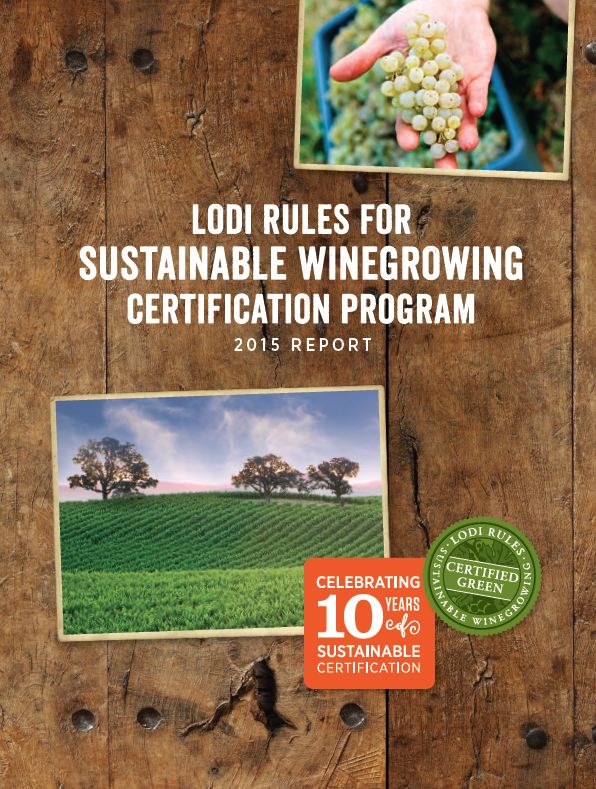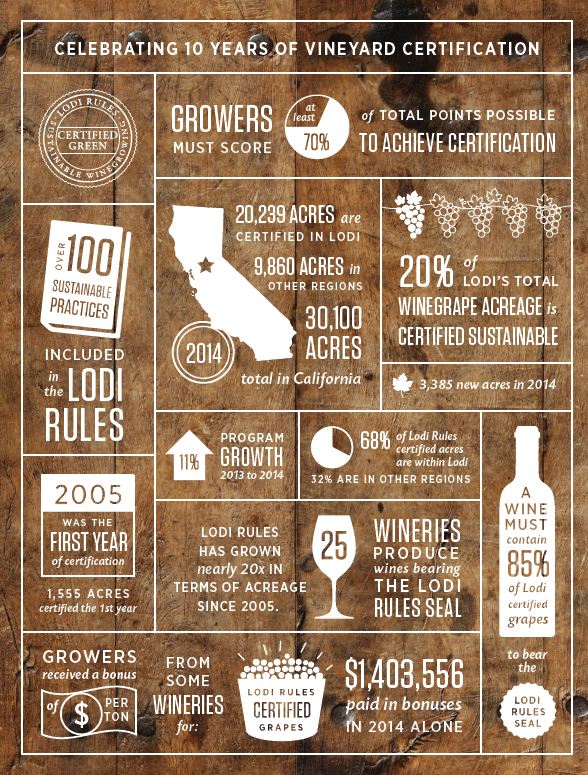Lodi winegrowers are proud of their sustainability accomplishments and especially so of the Lodi Rules for
Sustainable Winegrowing certification program. Our local winegrowing community has worked to ensure that
the natural and cultural treasures that make up Lodi wine country are stewarded so that future generations of
farmers and wine lovers alike can enjoy the vineyards and wines that we hold so dear. In this report, we open our
farm log books so you can see that we are serious about sustainability.
__________________________________________________________________________________
__________________________________________________________________________________
This report presents the adoption rates of sustainable farming practices included in the six chapters of
the Lodi Rules program: ecosystem management; education, training and team building; soil management; water
management; vineyard establishment; and pest management. Lodi Rules growers have been successful at
implementing sustainable practices. For example, in the ecosystem management chapter, 92% of growers have
installed nest boxes for raptors and birds to increase habitat biodiversity. In the human resources chapter, 62%
have implemented a safety rewards program to incentivize their workforce to take extra precaution against onthe-
job injury. In the soil management chapter, 93% of growers have used cover crops to prevent soil erosion.
These are three of many sustainable practices you will read about in the following pages. Overall, adoption rates
averaged across each of the six chapters range from 77% to 94%. The majority of practices have been adopted
by a majority of growers.
Next time you visit Lodi wine country or order a bottle of Lodi wine at your favorite restaurant, turn it
over and look for the Lodi Rules seal. This seal carries an important message. You can have confidence that the
grapes from which that wine was made were farmed in a way that benefits the environment, the local community,
and the economic viability of farm families.



